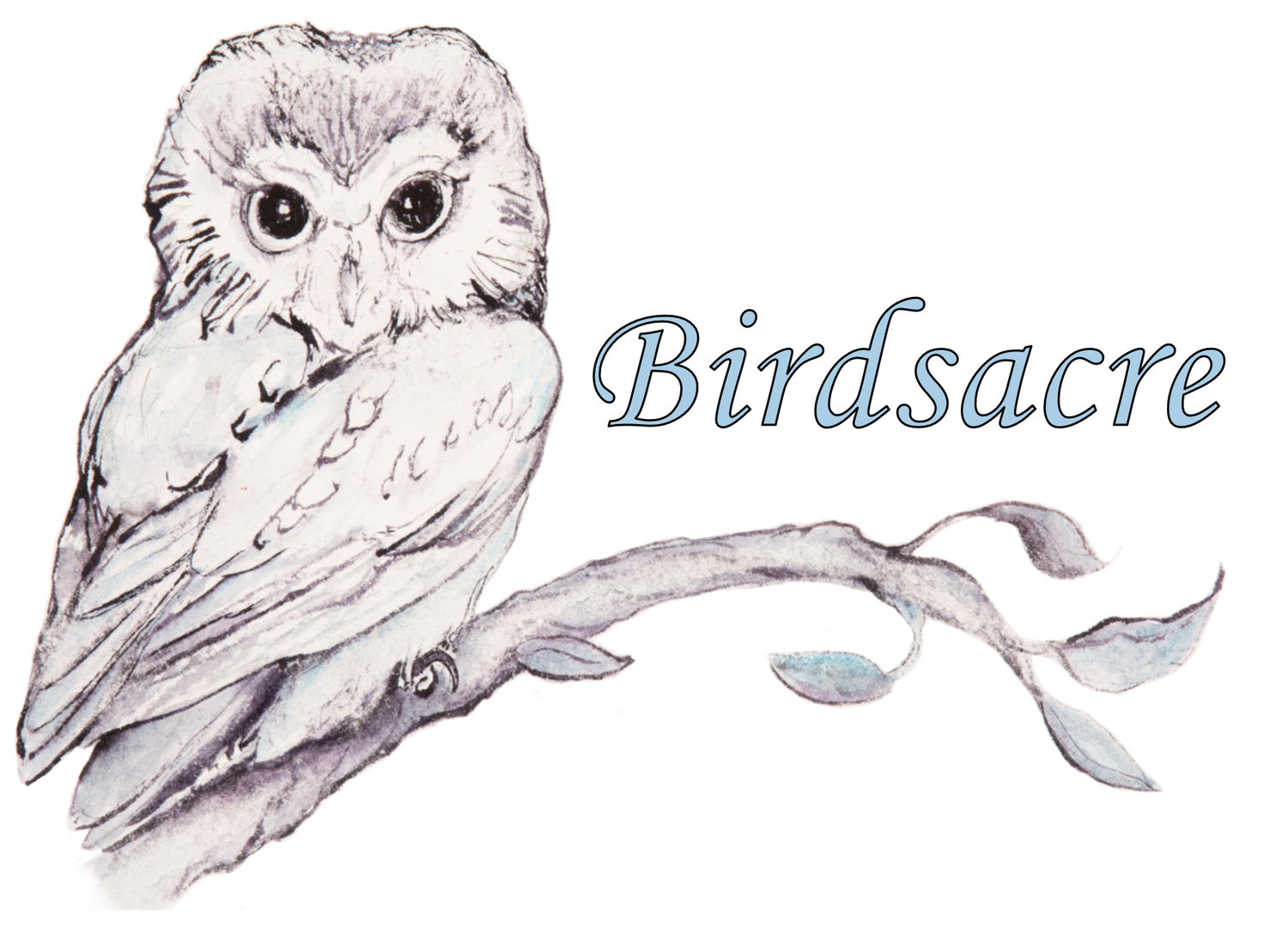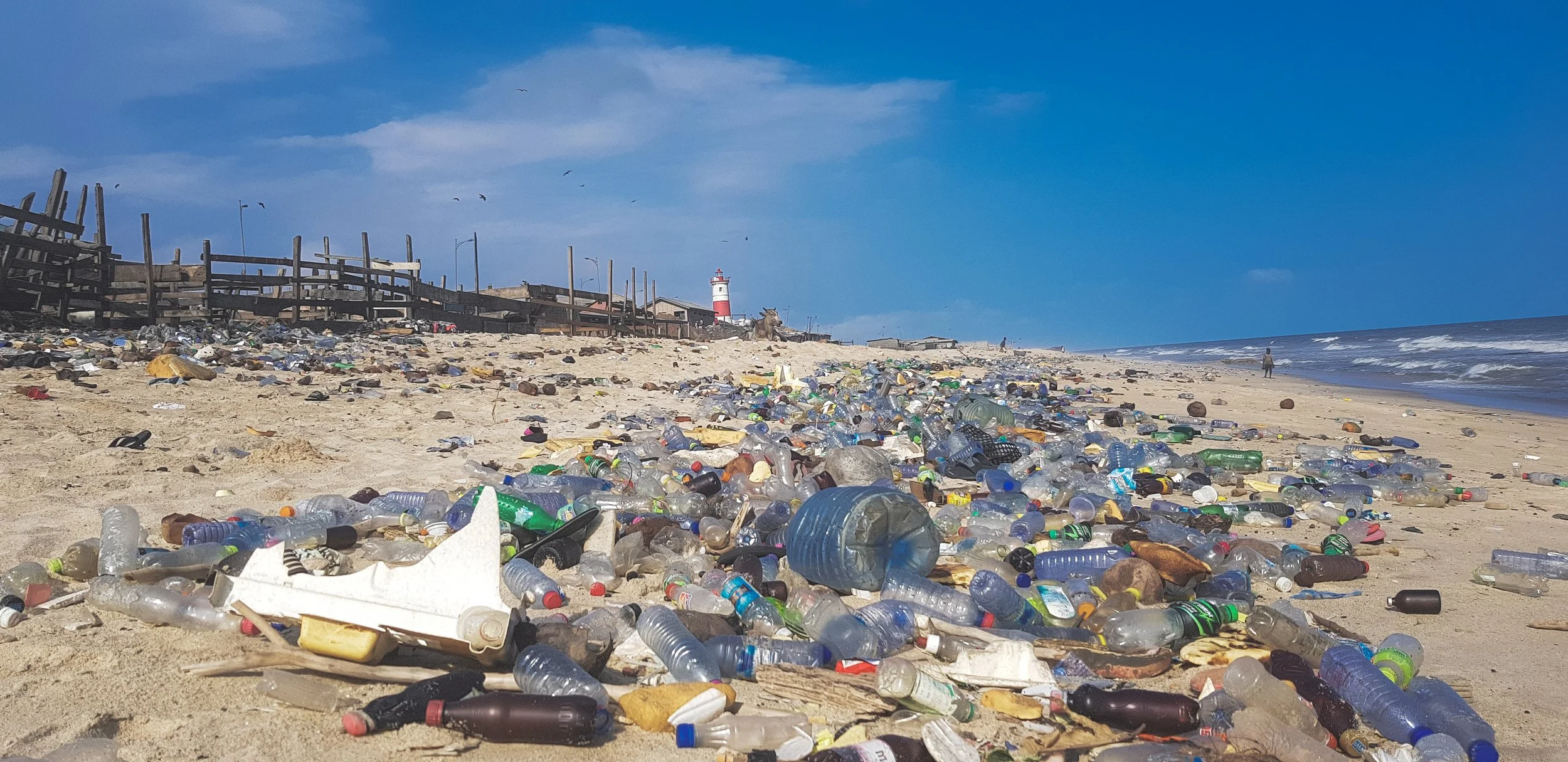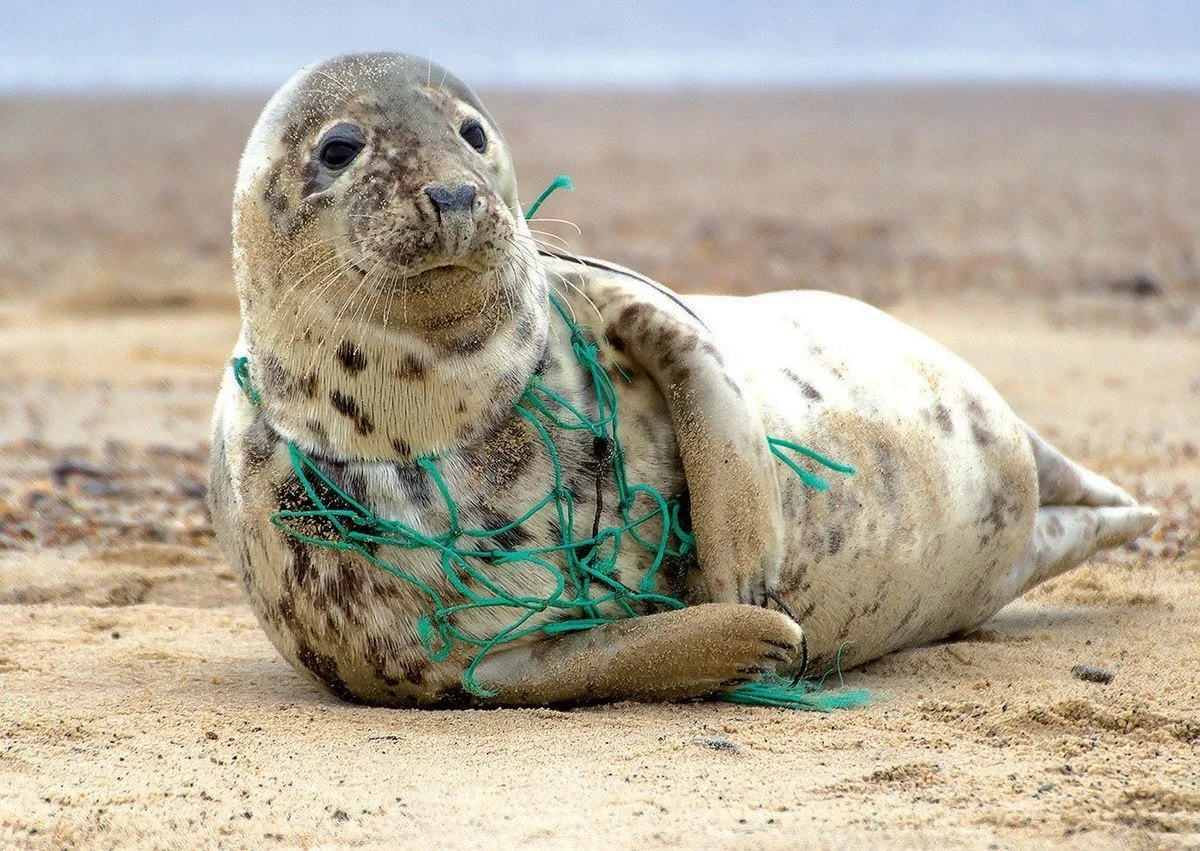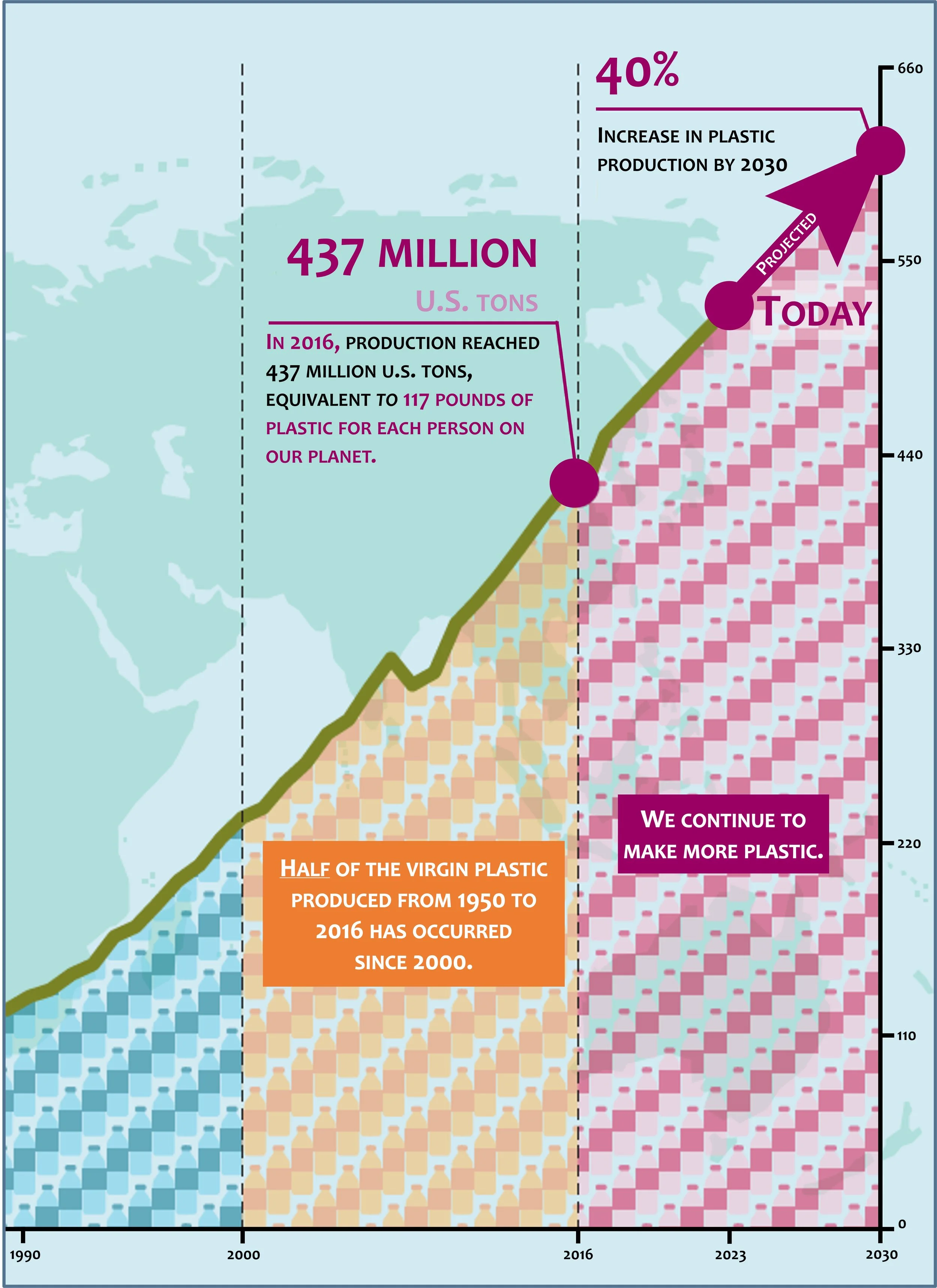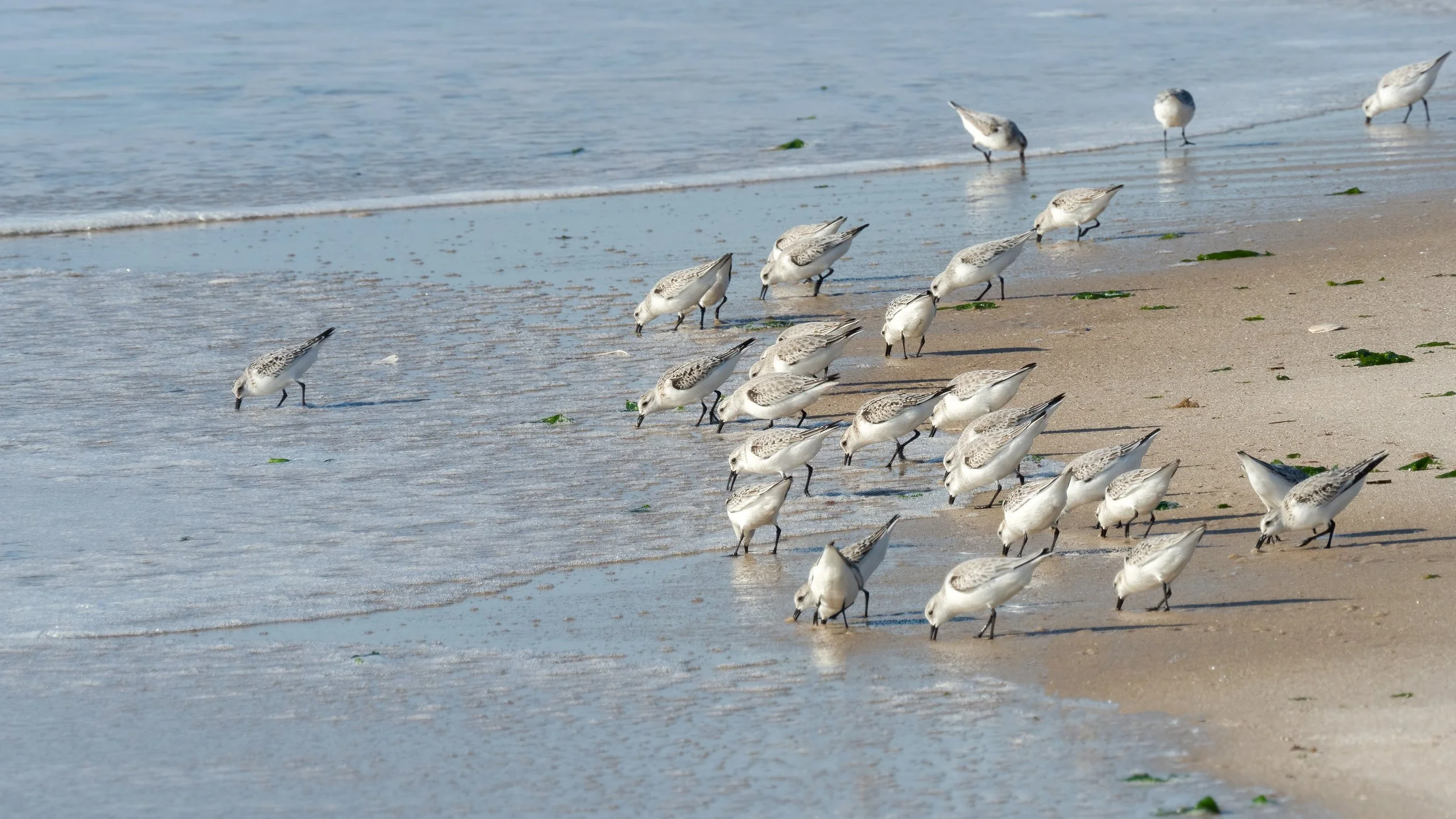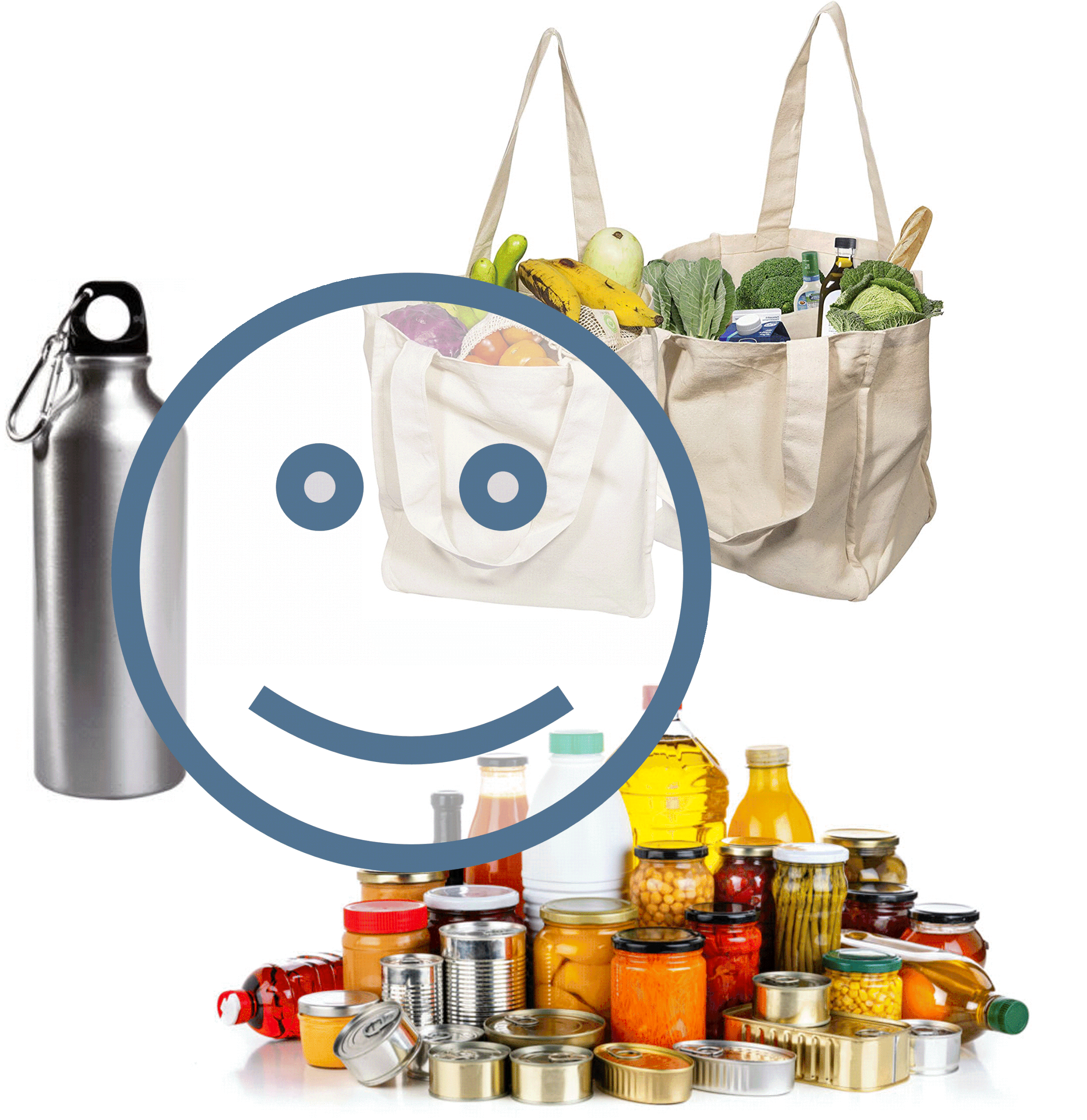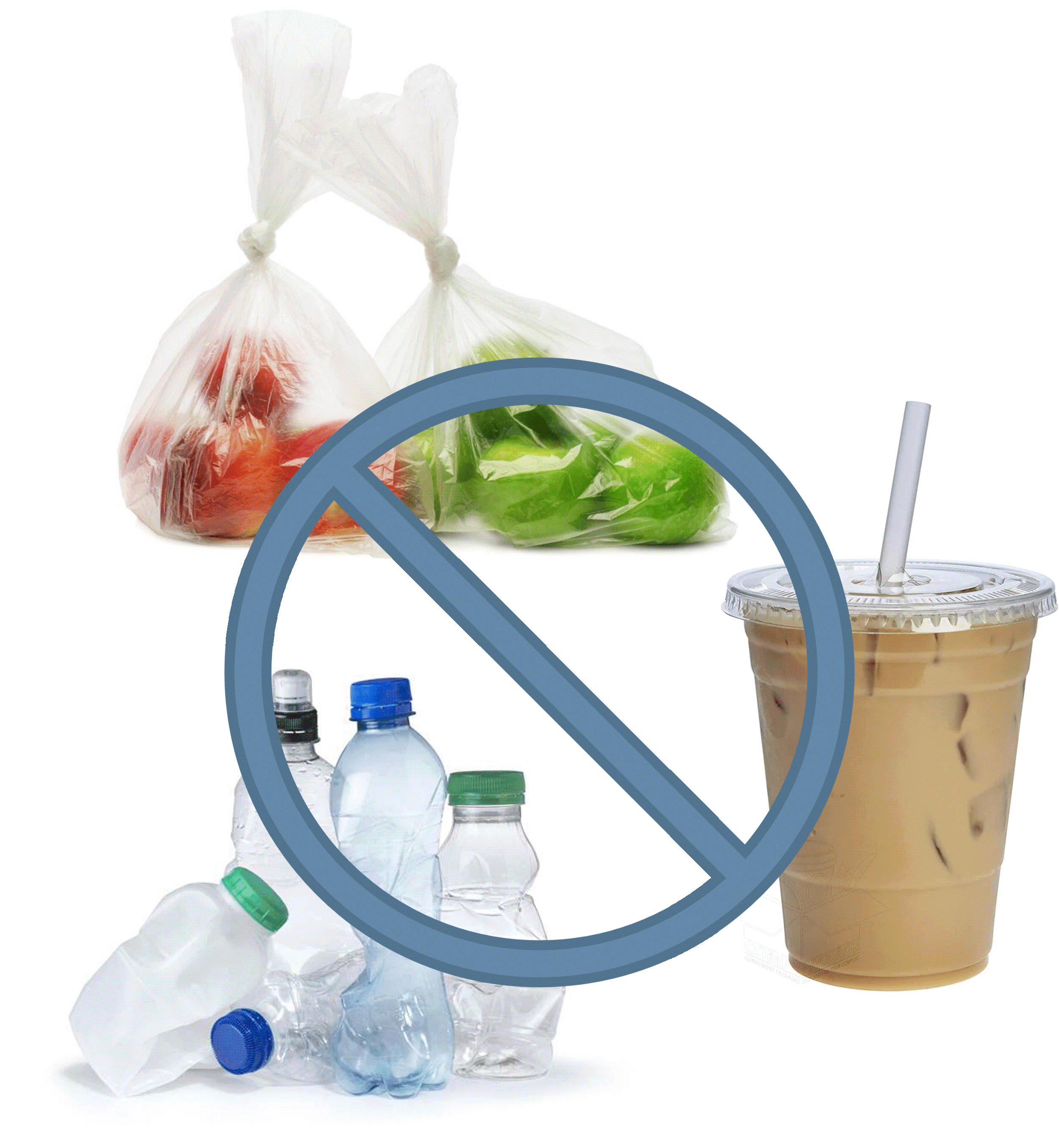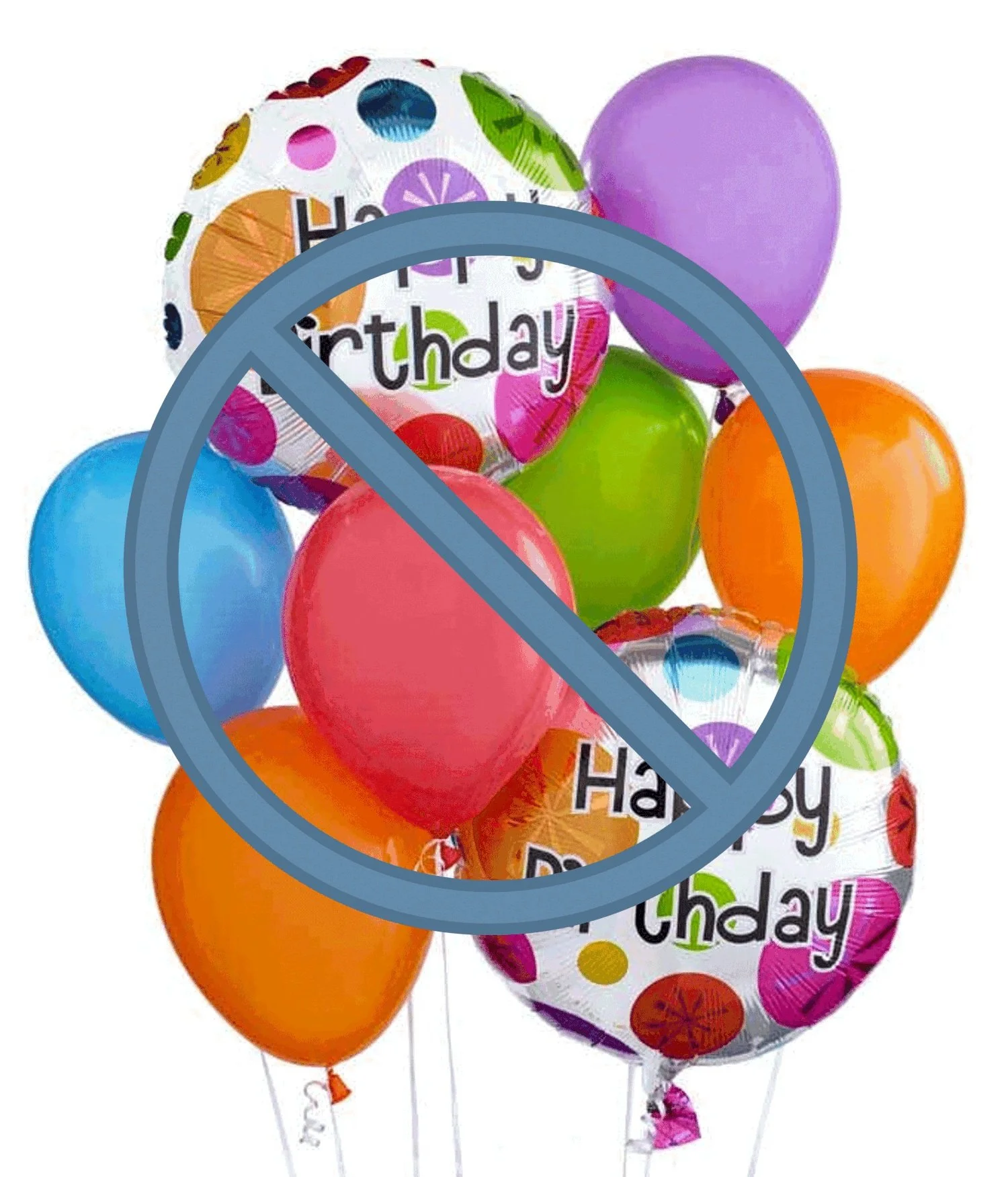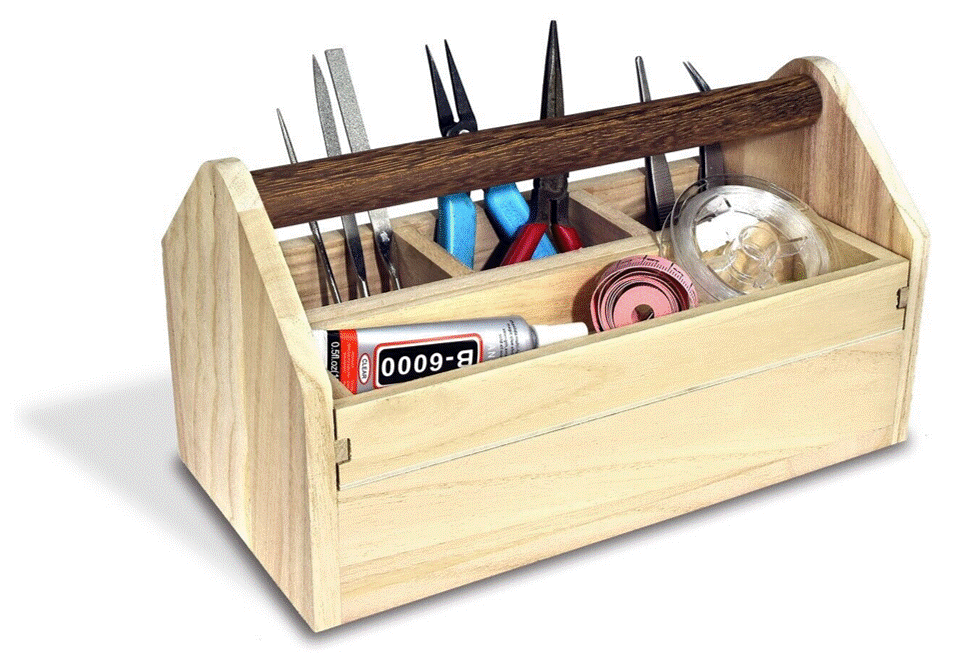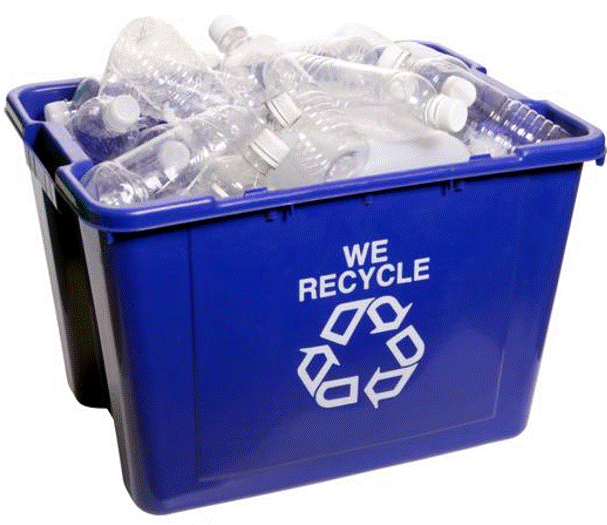We Are Swimming in Plastic: Is This What We Want?
If the average American uses 167 plastic bottles each year – about 1 bottle every 2 days – in 60 years each person will have used 10,000 plastic bottles.*
Those same single-use bottles will be around for your children’s children’s children’s children’s children’s children’s children’s children’s children’s children’s children’s children’s children’s children’s children’s children’s children’s children.*
Plastic is Important. It enhances our lives from bicycle helmets to dentures to artificial limbs to home insulation. It is lightweight, easy to shape, and inexpensive to produce – at a growing cost to us and our planet.
But Plastic is Forever. Every year over 440 million US tons of plastic is made. Half of this is single-use. Less than 10% is recycled. 80% goes into landfills. The rest goes into our environment. 12 million US tons goes into our oceans.
*Von Wong, artist, activist, advocate against ocean plastics, shared these observations in his work, 10,000 bottles, one Mermaid, and a single wish.
Plastic is Deadly to Our Natural Neighbors. Every year more than 1 million seabirds and 10,000 marine mammals consume single-use plastic they think is food - or they get ensnared in fishing line or ghost nets. Most do not survive. 80% of this plastic comes from our food, drink, and packaging waste.
By 2050 there could be more plastic in the ocean than fish in the sea (by weight)!
Our Plastic is Filling Our Oceans. Every year over 10 million US tons of plastic dumps into our oceans. 80% comes from on land, flowing from our rivers and sewer systems. The rest comes from cruise ships and fishing vessels.
Currents move the plastic – bottles, bags, fabrics, fishing nets, micro-pellets in shampoos and cleaners – sweeping and trapping it in five huge swirling ocean gyres. The plastic trapped in just one of these gyres, the Pacific gyre, forms a patch TWICE the size of Texas! Wind, waves, and sunlight break the plastic down into tiny particles (microplastics) along the way. In some places there are over 2 million pieces of plastic per square mile of ocean. Most of this eventually ends up on the ocean floor.
Along this path from land to the ocean floor, our forever plastic causes great harm to our natural world and to us.
Plastic hurts us, too. We are what we eat. Fish, shellfish, marine animals, birds, and microscopic plankton (the first link in the ocean food chain) consume tiny fragments of plastic as it breaks down. These “microplastics” range in size from 2/10 or an inch (the size of a large peppercorn) to microscopic. They carry chemicals and toxins from the original plastic and collect bacteria from the ocean. Research suggests consuming microplastics directly or indirectly produces less healthy marine organisms with offspring that actually seek microplastics as a food source. We, in turn, absorb these microplastic chemicals when we eat seafood that has consumed plastic.
When we reduce plastic in our lives, we improve our health and the health of our oceans.
Our Plastic Problem is Ballooning.
How Will We Choose to Go Forward?
Recycling is NOT the Answer (yet). Unfortunately, we are learning that recycling is not the solution championed by plastic manufacturers, environmental advocates, and others. Far less than 10% of plastic actually is recycled.
In reality, plastic waste is “extremely difficult to collect, virtually impossible to sort, environmentally harmful to reprocess, often made of and contaminated by toxic materials, and not currently economical to recycle” based on the existing model promoting single-use disposal.
Much of the plastic we believe is destined for recycling is either added to our overflowing landfills, shipped to other countries, and/or incinerated, enhancing global warming and putting toxins and microplastics in our atmosphere that we breathe.
You Can Help Reduce Plastic Every Day!
1) Refuse. Don’t accept single-use plastic unless you absolutely must. Live “plastic free” like your great grandparents! Commit to a reusable water bottle, don’t use extra bags when you shop, ask for foil for “take-out,” switch to bars of shampoo and soap. Think of what else you can do – and do it!
2) Reduce. Buy only what you actually need. Buy things that will last and that have a minimum of plastic packaging. Find substitutes for balloons, glitter, food in plastic, packing material.
3) Reuse and Repair. Use what you have instead of buying new. Buy products that will last. Fix what you can rather than throwing plastic away.
4) Recycle. Recycling is not the best answer but recycle properly whatever you can.
5) Raise Your Voice. The price of plastic should reflect the full price for manufacture and responsible disposal. Tell your representatives and companies about your plastic concerns. Ask for - and expect! - good policies to reduce plastic, investment in biodegradables and alternatives, efficient recycling, and mitigation of the plastic pollution in which we are swimming.
References
*10000 plastic bottles, one mermaid and a single wish https://blog.vonwong.com/mermaidplastic/. Photograph of plastic bottles and observations generously provided by artist and photographer (with an amazing team): Von Wong. #MermaidsHatePlastic
“Plastic pollution covering Accra beach.” https://commons.wikimedia.org/wiki/File:Plastic_Pollution_in_Ghana.jpg. Muntaka Chasant, CC BY-SA 4.0 <https://creativecommons.org/licenses/by-sa/4.0>, via Wikimedia Commons.
“Northern gannet (Morus bassanus) in flight carrying plastic waste, Island of Heligoland.” https://commons.wikimedia.org/wiki/File:Northern_Gannet_carrying_plastic_waste.jpg. Hobbyfotowiki, CC0, via Wikimedia Commons.
Great Blue Heron (Ardea herodias) with a plastic drink holder caught around its neck. Photograph by Tom Campbell. https://www.agefotostock.com/age/en/Search.aspx?author=Tom%20Campbell.
“Stomach contents of a dead albatross.” https://commons.wikimedia.org/wiki/File:Albatross_at_Midway_Atoll_Refuge_(808050752).jpg. Chris Jordan (via U.S. Fish and Wildlife Service Headquarters) / CC BY 2.0, Public domain, via Wikimedia Commons.
Barred Owl (Strix varia) caught in line. “Why we need to dispose of fishing line responsibly.” https://commons.wikimedia.org/wiki/File:Barred_Owl_with_Fishing_Line_(8158631483).jpg. U. S. Fish and Wildlife Service - Northeast Region, Public domain, via Wikimedia Commons.
Osprey (Pandion haliaetus) on Nest: “I Hate Plastic.” https://commons.wikimedia.org/wiki/File:I_Hate_Plastic_(48838972917).jpg#file. Andy Morffew from Itchen Abbas, Hampshire, UK, CC BY 2.0 <https://creativecommons.org/licenses/by/2.0>, via Wikimedia Commons.
A wild Great Egret (Ardea alba) walking on a plastic trash on the Amazon river. https://www.shutterstock.com/image-photo/wild-great-egret-bird-egretta-alba-1689157345.
“Seal entangled in plastic netting.” https://commons.wikimedia.org/wiki/File:Seal_entangled_in_plastic_netting.jpg. Subhankar Chatterjee and Shivika Sharma, CC BY 3.0 <https://creativecommons.org/licenses/by/3.0>, via Wikimedia Commons.
“Turtles can eat plastic bags and bottles mistaking them for jellyfish.” https://www.istockphoto.com/photo/sea-turtle-and-plastic-polution-gm1251409753-365208146.
“Soup of Plastic.” Data visualization by: Dumpark and presented with permission. Taken from: "A sea of plastic" infographic by Benjamin Bollmann and Dumpark. https://www.snf.ch/en/A5pPdxFzghb4zmKh/news/news-150619-horizons-sea-of-plastic. Published in: Horizons, no. 105, June 2015. https://issuu.com/snsf/docs/horizons_105_e. Data from: Eriksen M et al., 2014. Plastic Pollution in the World's Oceans: More than 5 Trillion Plastic Pieces Weighing over 250,000 Tons Afloat at Sea. PLoS ONE 9(12): e111913. https://doi.org/10.1371/journal.pone.0111913.
“Close-up side shot of microplastics on a hand.” https://www.istockphoto.com/photo/close-up-side-shot-of-microplastics-lay-on-people-hand-concept-of-water-pollution-gm1317882487-405181966.
This Rainbow Runner from the mid-Pacific is a fish consumed by humans. Seventeen pieces of plastic were found in its stomach. Permission for use of photograph kindly provided by Dr. Marcus Eriksen, 5 Gyres Institute.
Graph of annual plastic production. Solving Plastic Pollution Through Accountability, 2019, by Dalberg Advisors, and the team comprised of Wijnand de Wit, Adam Hamilton, Rafaella Scheer, Thomas Stakes, Simon Allan, for World Wildlife Foundation. ISBN 978-2-940529-93-3. Published by the World Wildlife Foundation (World Wide Fund for Nature Inc.); copyright holder.
“Sanderlings (Calidris alba) in Quogue, New York.” https://commons.wikimedia.org/wiki/File:Sanderlings_(72649).jpg. Rhododendrites. CC BY-SA 4.0 <https://creativecommons.org/licenses/by-sa/4.0>, via Wikimedia Commons.
Explore!
https://blog.vonwong.com/mermaidplastic/. 10000 plastic bottles, one mermaid and a single wish. Exploration of seascapes and mermaids created using thousands of single-use throw-away plastic bottles by artist, photographer, and advocate for reducing plastic, Von Wong. #MermaidsHatePlastic
In The Plastic Problem, PBS Newshour looks “at this now ubiquitous material and how it’s impacting the world, why it’s become so prevalent, what’s being done to mitigate its use, and what potential alternatives or solutions are out there.”
National Geographic offers classroom resources to explore the impact of plastic on our lives and in our environment and ways people can help.
5 Gyres drives innovative solutions to plastic pollution by leveraging the power of science, advocacy, and community. 5-Gyres Trash Academy offers short educational videos online that discuss questions viewers may have, where plastic comes from, different ways plastic is used around the globe, the harm it causes, and what can be done to create a plastic-free future.
Several organizations offer resources and information about the impact of plastics on humans and the environment, and how harmful impacts can be reduced.
United Nations Environment Program:
https://www.unep.org/interactives/beat-plastic-pollution/
https://www.unep.org/topics/chemicals-and-pollution-action/plastic-pollution
Earth Day’s 2024 “Planet vs Plastics” theme
